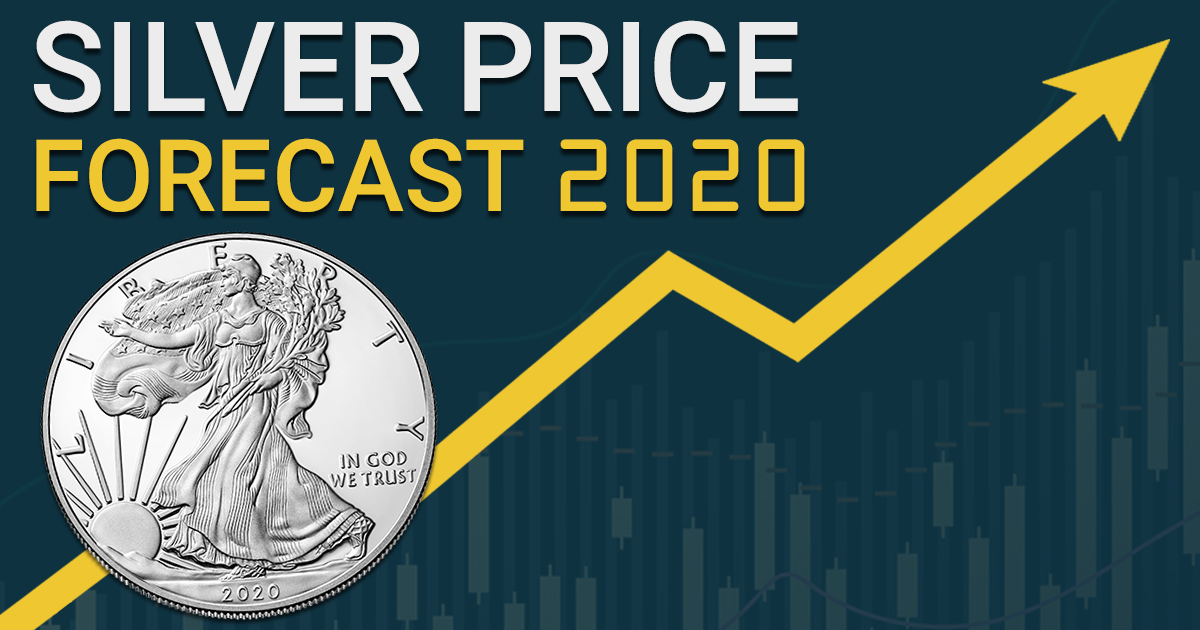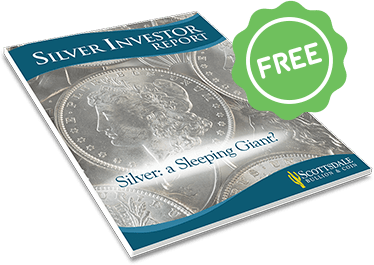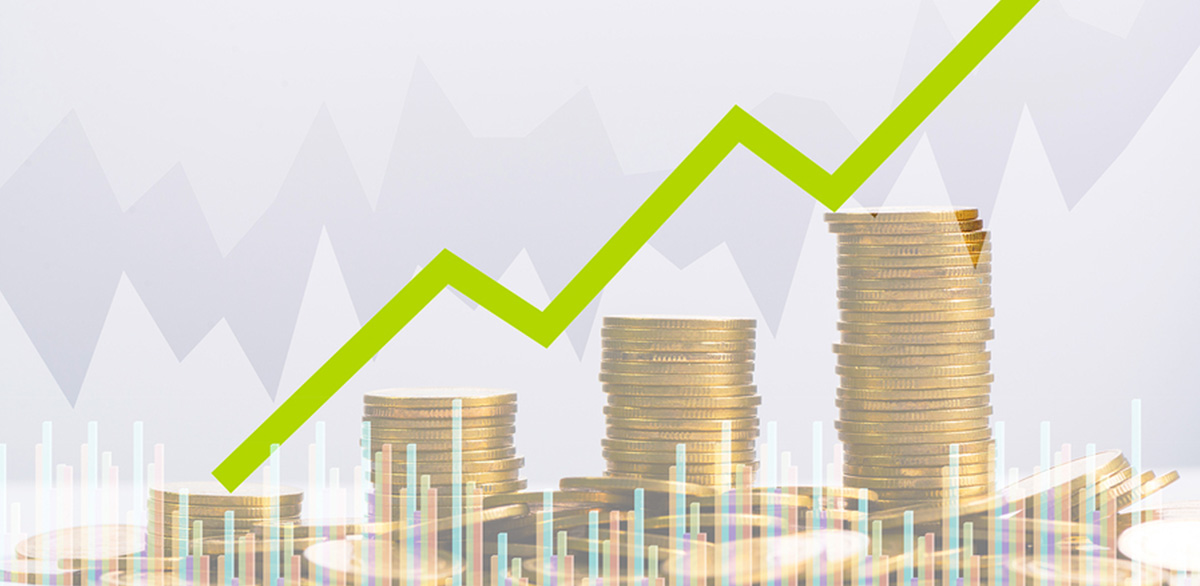Silver bullion bars also referred to as silver ingot bars, generally, consist of 99.99% silver and range in size from one ounce to 5000 ounces. The 10-oz and 100-oz sizes are the most popular with investors.
The 5-oz, 25-oz, and 50-oz size bars, which were produced in the early 1970’s, are very difficult to find nowadays. However, the diligent collector can sometimes find these silver bars on popular online auction sites such as eBay.
Unlike silver coins, silver bullion bars are first and foremost an industrial product. They are intended to be used as a storage means and are consider a trading medium. They are very liquid but should be purchased strictly as an investment and not used for bartering purposes.
Some of the advantages of owning silver bullion bars are:
- Uniform size, making them very convenient to store and easy to handle.
- Compact size, making them ideal for investors who want to secure a large amount of wealth in a relatively small storage area.
- Recognizable hallmarks, making them readily accepted for resale and easily convertible to cash.
Brand Names of Popular Bullion Bars
- Credit Suisse Silver Bars – Large gold bullion producer who makes a small selection of high-premium silver bars.
- Engelhard Silver Bars – One of the most highly reputed silver bar producers, despite no longer actively producing.
- Heraeus Silver Bars – Very high premium silver bars, rarely available on the retail market.
- Johnson Matthey Silver Bars – Similar stature to Engelhard, makes popular 1 and 100 oz bars.
- NTR Metals Silver Bars – A refiner out of Texas, producing 10 oz and 100 oz bars for cheap.
- OPM Silver Bars – Ohio Precious Metals, now owned by NTR and producing similar products.
- PAMP Suisse Silver Bars – A Swiss brand that makes high-premium art silver bars.
- RCM Silver Bars – The Royal Canadian Mint, produces .9999 100 oz silver bars.
- Scottsdale Silver Bars – A silver bar retailer who offers their own line of minted silver bars.
- SilverTowne Silver Bars – Another retail company that also does wholesale, offers 1 oz, 5 oz, 10 oz, and 100 oz bars.
- Sunshine Silver Bars – 1, 10, and 100 oz bars.
The 100-oz silver bullion bars are often called investment bars, because collectors who buy them usually do so for investment purposes, not as a hedge against inflation. These type of collectors will often sell when silver prices go up.
The 100-oz silver bullion bars are desirable because they offer a low markup over the spot price of silver, although they aren’t as flexible as the 10-oz variety.
The most popular silver bullion bars are created by Engelhard and Johnson-Matthey. Although they are two of the world’s largest refiners, they have not mass-produced silver bars since the mid-1980s. This means Johnson-Matthey and Engelhard silver bars are only available when other investors decide to sell.
More readily available are the 100 ounce Wall Street Mint and Sunshine Mining bars. The English Sheffield and Handy Harman bars can be obtained, but are more difficult to find. The most popular size is the 100 troy ounce silver bar produced by Englehard, an American company.
Engelhard is renowned for producing quality silver bullion bars that are accurately stamped with the exact pureness of the silver that is contained in the bar. Because of their low premium over spot, compared with silver bullion coins, the 100-oz Engelhard silver bars are an excellent way to invest in silver bullion.
Johnson-Matthey was founded in 1817 and has an unrivalled reputation in the precious metals field, because of its technical excellence and dedication to quality. Johnson-Matthey 100 ounce silver bars are always in high demand from silver collectors and investors because of their confidence in the company.
An investor can buy a Johnson-Matthey silver bar with total confidence in its purity, liquidity, quality. Every Johnson-Matthey silver bar is stamped with the exact weight and an individual serial number, exclusive to each and every buyer.
How to Buy Silver Bullion Bars for Investment
Silver Bullion Bars are not only a great investment with potential for appreciation but a way to protect your wealth against inflation, bank failures, and other unforeseen financial catastrophes. In these uncertain times, investing in silver can be an easy way to make sure your family’s financial future is secure.
Traditionally, bullion bars came in 100 oz. sizes; however, now companies have innovated to include even 1 oz silver bullion bars. So, going on: here’s how to invest in silver using bullion bars.
![]() The first step is determining your silver investing budget: how much silver can you afford to buy. This will then determine the amount (in ounces) you should buy. Studies from Ibbotson Associates shows between 8 – 10% of your total investment portfolio should be invested in silver. However, if you think above average inflation is on the way then a higher percentage may be warranted.
The first step is determining your silver investing budget: how much silver can you afford to buy. This will then determine the amount (in ounces) you should buy. Studies from Ibbotson Associates shows between 8 – 10% of your total investment portfolio should be invested in silver. However, if you think above average inflation is on the way then a higher percentage may be warranted.
![]() Anyways, after figuring out the ideal budget for your personal investing needs, selecting the size of the bullion bar is next. This step is a little more tricky than the last. Take the total amount you’ve budgeted ($1,000 for example) and divided it by the current price of silver ($18.44 for example). This will equal the amount of silver you can buy in terms of ounces (54.22 ounces of silver for this example). Now, just as you wouldn’t want just one stock, you won’t want one large bar of silver. It’s important to spread out the ounces you can buy into multiple bars because of the liquidity risk. Say one day you need to liquidate some silver–it will be much easier with multiple (smaller sized) bars.
Anyways, after figuring out the ideal budget for your personal investing needs, selecting the size of the bullion bar is next. This step is a little more tricky than the last. Take the total amount you’ve budgeted ($1,000 for example) and divided it by the current price of silver ($18.44 for example). This will equal the amount of silver you can buy in terms of ounces (54.22 ounces of silver for this example). Now, just as you wouldn’t want just one stock, you won’t want one large bar of silver. It’s important to spread out the ounces you can buy into multiple bars because of the liquidity risk. Say one day you need to liquidate some silver–it will be much easier with multiple (smaller sized) bars.
![]() Now, once you’ve decided the ounce allocation, the third step is deciding the company(ies) that you’ll buy these silver bars from. Several companies like A-Mark, Sunshine Minting Co., and Engelhard all make various silver bullion bars. Now, back to this spreading out risk idea as we talked about in #2, it’s important to remember that buying silver bars from one single company would be riskier than spreading your silver allocation out to all three (or more). That way, should investors favor waver from one bullion bar to another, you’ll be set holding multiple types of bullion bars.
Now, once you’ve decided the ounce allocation, the third step is deciding the company(ies) that you’ll buy these silver bars from. Several companies like A-Mark, Sunshine Minting Co., and Engelhard all make various silver bullion bars. Now, back to this spreading out risk idea as we talked about in #2, it’s important to remember that buying silver bars from one single company would be riskier than spreading your silver allocation out to all three (or more). That way, should investors favor waver from one bullion bar to another, you’ll be set holding multiple types of bullion bars.
Where to Buy Silver Bullion Bars
- Money Metals Exchange is one of the top online bullion dealers and has earned a top spot for bullion bars. Read reviews of Money Metals Exchange.
- BGASC.com is a family owned online bullion dealer offering low prices and free shipping after spending a minimum total. Read reviews of BGASC.com.
The post Silver Bullion Bars: Complete Investors Guide to Bullion Bars appeared first on Silver Monthly.




 1878 – 1921 Silver Morgan Coin Dollars are 90% silver, and is classified as “junk silver” read more about junk silver. Silver Morgan coins are some of the most valuable silver coins.
1878 – 1921 Silver Morgan Coin Dollars are 90% silver, and is classified as “junk silver” read more about junk silver. Silver Morgan coins are some of the most valuable silver coins.

















